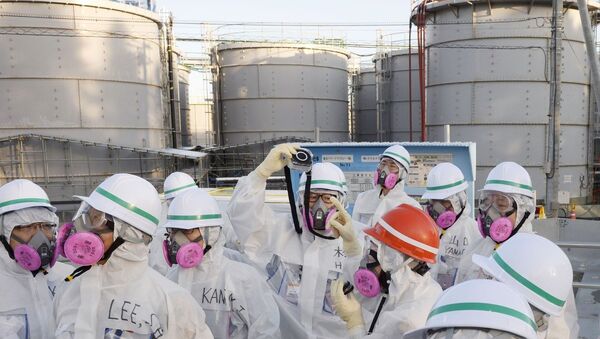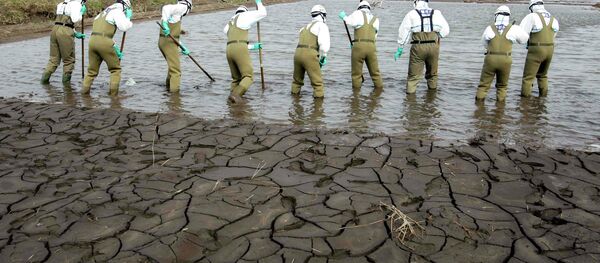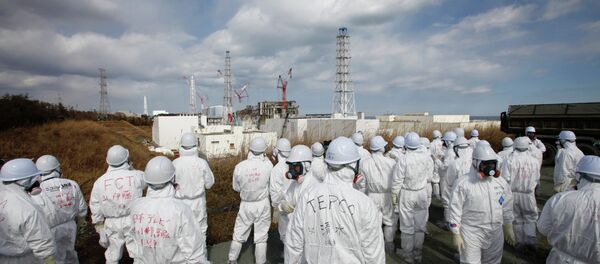The Japanese government has officially confirmed that a worker at the Fukushima nuclear plant has contracted radiation-related cancer: the man has been diagnosed with acute myelogenous leukaemia.
"But that single 'official' cancer case is just the beginning. New scientific research indicates that hundreds more cancers have been and will be contracted in the local population. A 30-fold excess of thyroid cancer has been detected among over 400,000 young people below the age of 18 from the Fukushima area," British journalist, author and health and environment issue campaigner Oliver Tickell wrote in his article for The Ecologist, citing a report entitled "Thyroid Cancer Detection by Ultrasound Among Residents Ages 18 Years and Younger in Fukushima, Japan: 2011 to 2014."
Tickell noted that during a first screening for thyroid cancer held four years after the Fukushima catastrophe among 298,577 youths, the disease was registered 50 times more frequently among those who lived in the most heavily irradiated zones than among other Japanese youth.
During a second screening carried out in April 2014 among 106,068 young people who lived in less contaminated areas of the Fukushima prefecture, the disease was 12 times more common than for the main population.
"Thyroid cancer is commonly developed as a result of acute exposure to radioactive iodine 131, a product of nuclear fission. Because iodine concentrates in the thyroid gland, thyroid damage including cancer is a characteristic marker of exposure to nuclear fallout," Tickell elaborated, adding that iodine-131 constituted about 9.1 percent of the radioactive material released during the Fukushima disaster.
That is not all, the British journalist added, emphasizing that the real exposure doses for residents could have been higher than had been reported by the authorities and the World Health Organization.
"We could infer a possibility that exposure doses for residents were higher than the official report or the dose estimation by the World Health Organization, because the number of thyroid cancer cases grew faster than predicted in the World Health Organization's health assessment report," the authors of the report underscored, as quoted by Tickell.
The British journalist also highlighted that the scientists have failed to mention that other radioactive elements emitted in the accident pose even more of a threat to the population's health (in particular, 17.5 percent Cesium-137 and 38.5 percent Cesium 134).
"These longer-lived beta-emitters (30 years and two years respectively) present a major long-term hazard as the element is closely related to potassium and readily absorbed into biomass and food crops," Tickell stressed.
The author bemoaned the fact the Japanese people also face a danger posed by "long lived alpha emitters like plutonium 239 (which has a half-life of 24,100 years) which is hard to detect."
"Even tiny nano-scale specks of inhaled plutonium entering the lungs and lymphatic system can cause cancer decades after the event by continuously 'burning' surrounding tissues and cells," Oliver Tickell warned.




